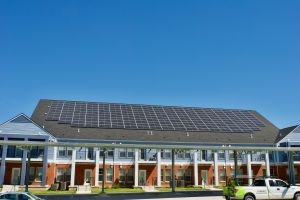Karen Weigert examines research, initial findings, potential implications, and suggestions for future research on benchmarking and energy efficiency programs.
In 2013, the City of Chicago passed the Chicago Energy Benchmarking Ordinance to raise awareness of building energy performance through information and transparency, with the goal of unlocking energy and cost savings opportunities. The ordinance requires commercial, institutional, and residential properties over 50,000 square feet to benchmark energy use and report information annually to the City of Chicago, and verify data once every three years. The ordinance also authorizes the City to publicly release the information after the second year that a property reports.
Following two successful years of ordinance implementation, the City of Chicago partnered with several organizations to improve energy benchmarking compliance communications and to prompt energy performance improvement using the benchmarking results. Despite extensive research on “nudging” interventions to encourage energy efficiency among residential households or small businesses, there is more limited research on efforts to target representatives of larger, more complex properties.
To address this gap and utilize building energy benchmarking results to drive energy efficiency action, the City of Chicago and partners launched an ongoing effort to apply behavioral economics principles to large commercial, institutional, and multifamily properties by conducting market research and testing different approaches in randomized controlled trials. This paper provides insights from the team’s unique research, initial findings, potential implications for other benchmarking and/or energy efficiency programs, and suggestions for future research.


